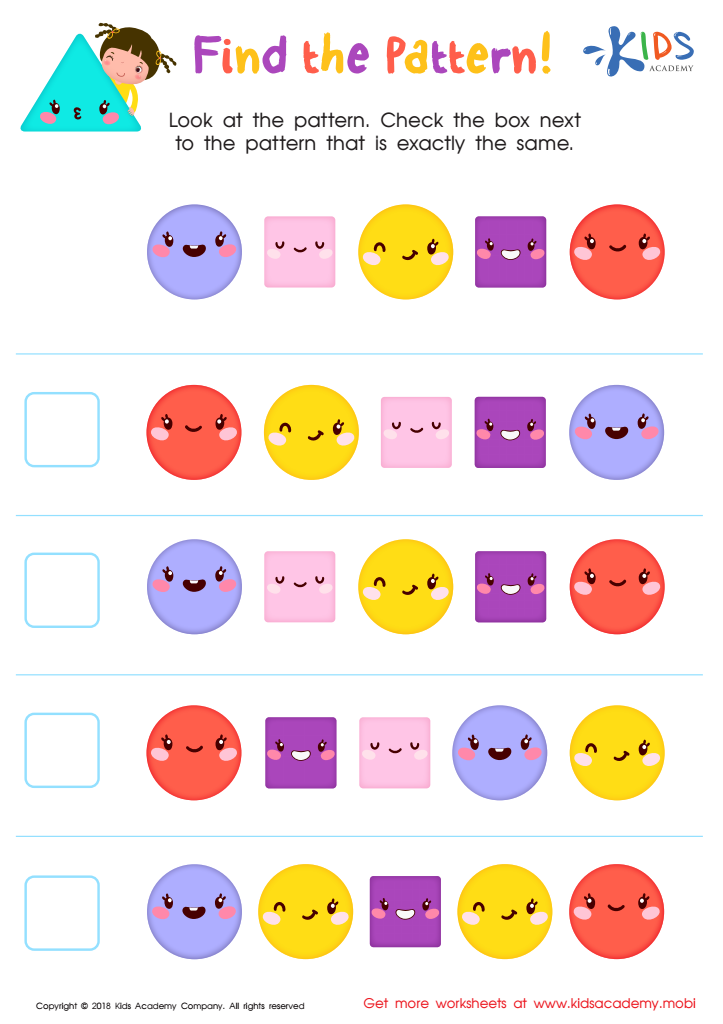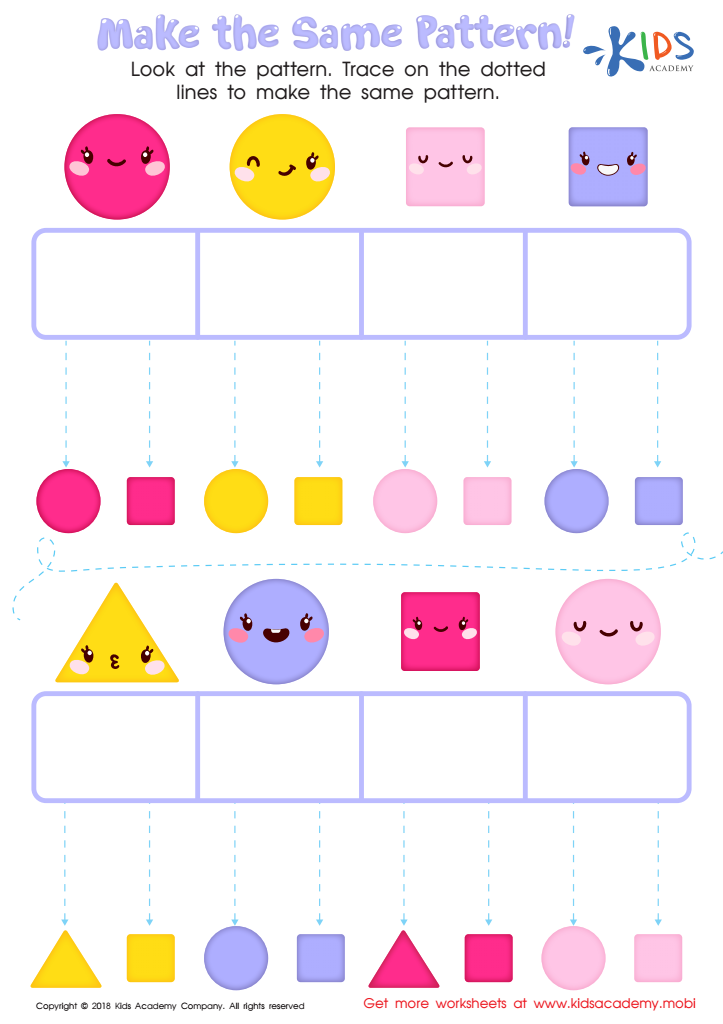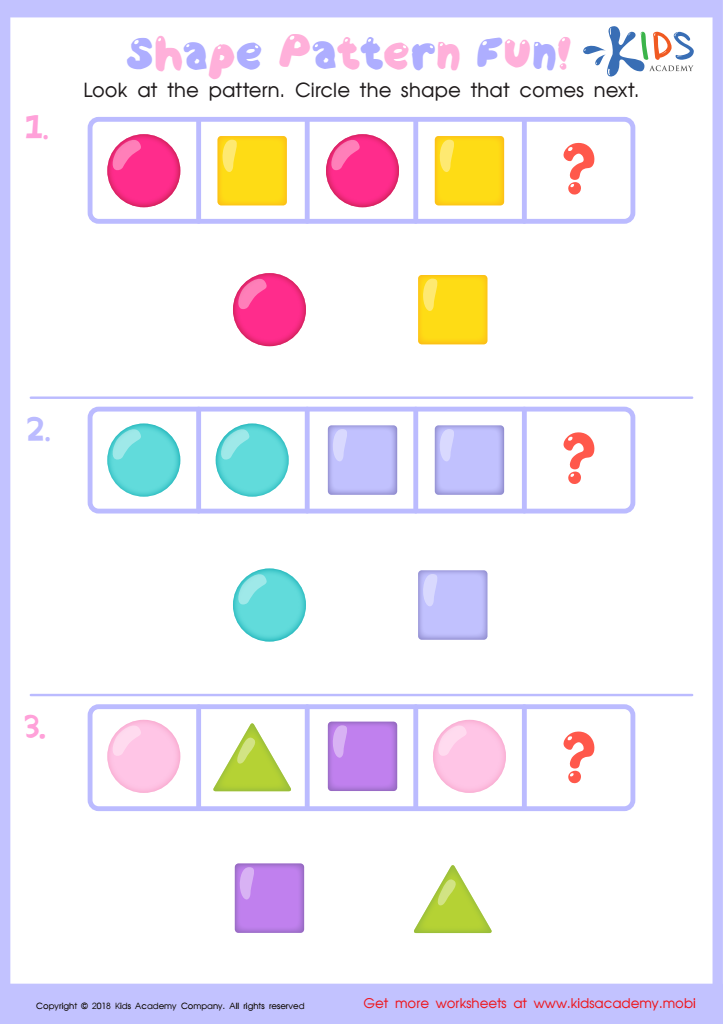Pattern recognition Geometry Worksheets for Ages 3-9
3 filtered results
-
From - To
Unlock your child's potential with our engaging Pattern Recognition Geometry Worksheets designed for ages 3-9. These fun and educational worksheets help young learners develop critical thinking and problem-solving skills through the recognition of shapes and patterns. Perfect for preschool through early elementary, each activity builds a foundation in geometry while enhancing memory and concentration. Featuring colorful illustrations and varying difficulty levels, our worksheets are ideal for both home and classroom use. Support your child's cognitive development and boost their confidence with our expertly crafted pattern recognition exercises today! Visit us at Kids Academy to discover more.


Find the Pattern Worksheet


Make the Same Pattern Worksheet


Shape Pattern Fun Worksheet
Pattern recognition and geometry are foundational components of early childhood education, playing a crucial role in cognitive development for children ages 3-9. These skills cultivate critical thinking and problem-solving abilities by encouraging young learners to observe, compare, and predict sequences, shapes, and forms.
Studying patterns helps kids notice regularities and irregularities in their environment, enhancing their observational skills and attention to detail. This foundational thinking in patterns translates to numerous subjects, such as mathematics, where understanding number patterns lays the groundwork for arithmetic and algebra.
Geometry introduces children to the spatial aspects of their world. Recognizing shapes, sizes, and spatial relationships fosters an adeptness in navigation, drawing, and understanding the physical space around them. Manipulating shapes sharpens fine motor skills, while discussing their properties and relations strengthens vocabulary and descriptive abilities.
For literacy, exposure to patterns supports the prediction of sequence in stories, while geometric concepts assist in letter recognition and spatial orientation on a page. These experiences build neural connections that are vital for reading and writing development.
Ultimately, proficiency in pattern recognition and geometry nurtures a child’s intellectual curiosity and confidence, equipping them with analytical tools and laying a strong foundation for future academic success. Therefore, investing in these areas benefits a child’s comprehensive cognitive growth and lifelong learning trajectory.
 Assign to My Students
Assign to My Students































